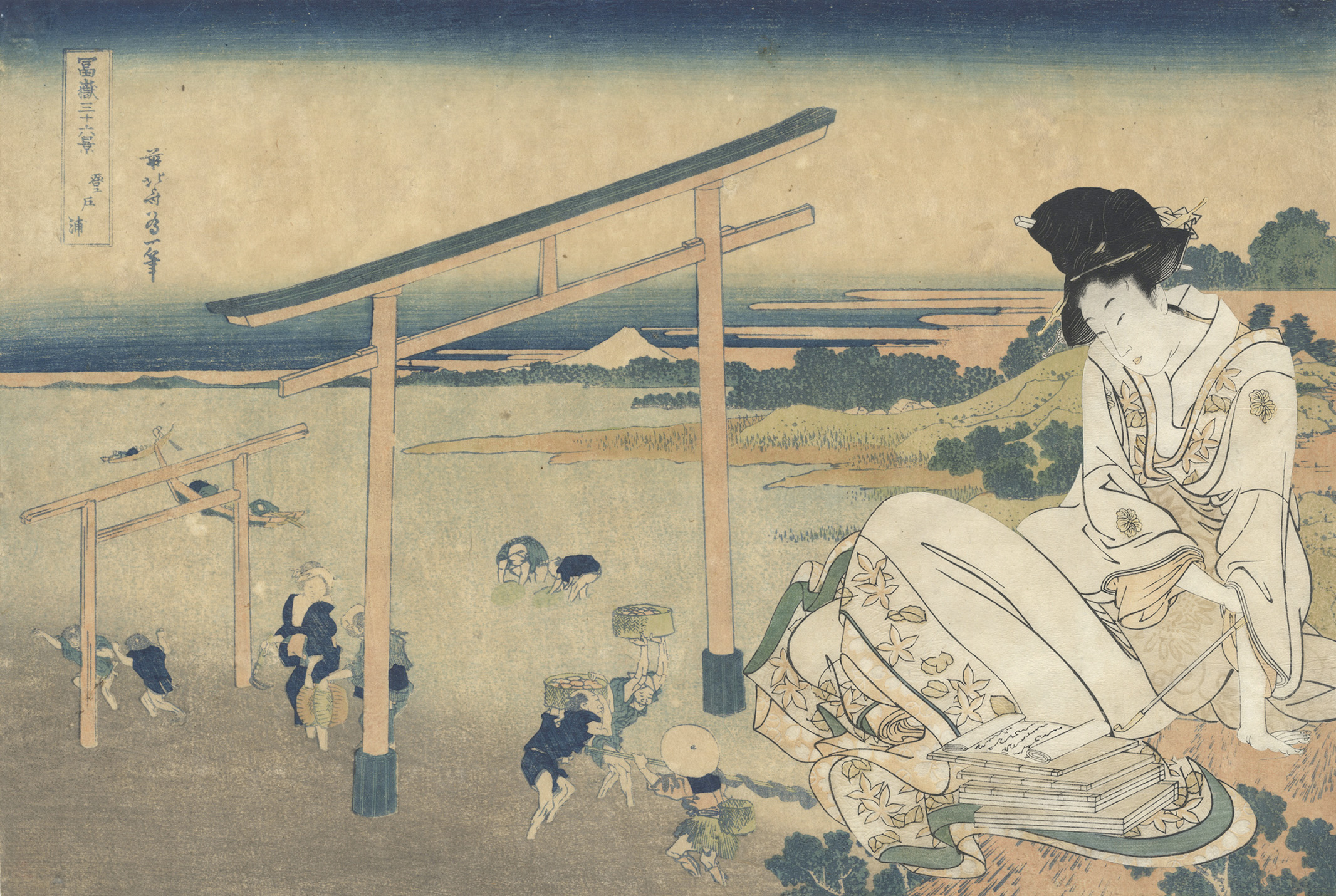LONDON, UK. July 26th, 2023 - Japan has been harnessing its soft power for decades. Now, there is a fervour around the recent collaborations of contemporary Japanese artists such as Yayoi Kusama with global fashion brand Louis Vuitton. The country has seen a spike in interest from abroad and not just within the contemporary art world. A renewed interest in the traditional arts has skyrocketed, making it a valuable investment for any art collector.
Japanese woodblock prints are known as Ukiyo-e, literally meaning "pictures of the floating world". Developed during the Edo period (1603-1868), they offer a glimpse into the people’s vibrant daily lives, as well as the beauty in nature, legends, and historical events. In this article, we embark on a journey to explore the contributions of 5 influential ukiyo-e art masters, whose works continue to inspire and captivate audiences worldwide.
I. Katsushika Hokusai (1760-1849): Ukiyo-e Visionary
Hokusai, a true artistic genius, showcased his versatility through an expansive body of work that spanned his lifetime. Most famous for his iconic print, "The Great Wave off Kanagawa," Hokusai's contribution to landscape and nature prints is unparalleled. His ability to capture nature's power and its ever-changing mood is a testament to his skill and enduring legacy.
II. Ando Hiroshige (1797-1858): The Poet of Landscape
Hiroshige's evocative and poetic landscapes reveal a deep connection between humanity and nature. His print series, "One Hundred Famous Views of Edo," showcases Hiroshige's mastery of composition and atmosphere, capturing the essence of the changing seasons and the tranquil beauty of everyday life in Edo (now Tokyo). Hiroshige's prints have become iconic representations of Japanese aesthetics which are still influential today.
III. Utagawa Kuniyoshi (1797-1861): Dynamic Warriors and Mythology
Kuniyoshi's dynamic and imaginative style takes us into the realm of mythology, warriors, and legendary creatures. His prints depict dramatic scenes of heroic samurai, legendary figures, and supernatural beings. Kuniyoshi's distinctive use of colour and bold composition captivates viewers and contributes to his enduring popularity.
IV. Tsukioka Yoshitoshi (1839-1892): Emotion and Darkness in Meiji-era Prints
Yoshitoshi’s prints stylistically bridge the gap between the traditional ukiyo-e and the modern Meiji Japan. His works depict historical figures and legends with a unique blend of technical precision and emotional depth. Yoshitoshi's vivid, often haunting imagery reflects the transition of Japan from a feudal to a modernised society, capturing the unease of a nation in flux.
V. Kitagawa Utamaro (1753-1806): Glimpsing a World of Elegance
Utamaro's mastery lies in his refined depictions of women, particularly geishas and courtesans. Utamaro captures the subtleties of their grace and emotion, immersing us in the world of the pleasure quarters. His meticulous attention to detail and delicate composition makes his work instantly recognisable.
Each artist has left a deep imprint on Japanese art and offers us a glimpse into the rich cultural heritage of Japan. Let us embrace the hidden beauty of ukiyo-e and celebrate the enduring legacy of these remarkable masters who have globally influenced art and culture.


